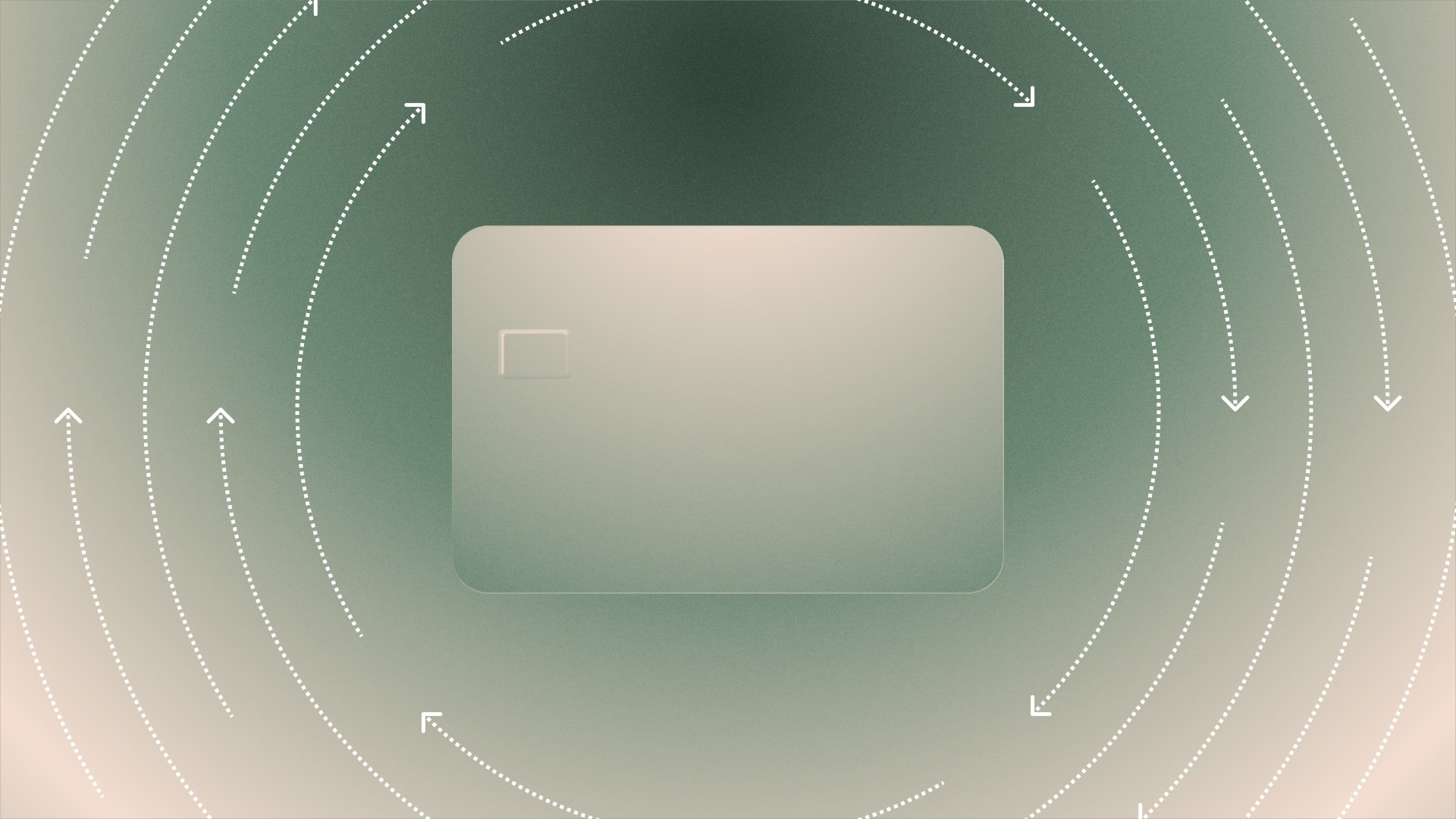ACH vs. wire transfer: What are the main differences?

Aside from credit card payments, the two most common types of electronic payments are ACH transfers and wire transfers. By understanding the core differences between these two forms of electronic payments, you can get a sense of which option is best for particular use cases and business needs.
Key takeaways:
ACH transfers and wire transfers are both common ways to move money electronically, but they differ in speed, cost, and use cases. ACH is best for routine, low-cost, and recurring payments, while wire transfers are better for large, urgent, or international transactions.
What is a wire transfer?
A wire transfer is a form of electronic payment in which a “sending institution” (e.g., the bank of the individual or business sending payment) sends money to a “receiving institution” (e.g., the bank of the individual or business receiving payment). Wire transfers are usually initiated by the individual making payment, and rely on the secure transfer of information between institutions through systems like SWIFT (international) or Fedwire (U.S. only).
Wire transfers are typically used to send large payments between two people or organizations in different geographic locations, and funds can be transferred between financial institutions in the same country, or in different countries.
What is an ACH transfer?
ACH transfers are another form of electronic money transfer between financial institutions in the U.S. ACH stands for “Automated Clearing House” — the network responsible for processing these types of transactions.
ACH transfers are used in a variety of electronic money transfers, such as direct deposits of paychecks into an employee’s bank account, online bill payments, deposits into a brokerage account, or recurring deposits into a retirement account. Many payments apps, including Zelle and Venmo, use the ACH network to send payment between parties.
What are the main differences between ACH and a wire transfer?
ACH and wire transfers are both electronic forms of payment between financial institutions — but the similarities stop there. To help decide which is the right form of electronic payment for your business, here’s a rundown of the key differences between ACH and wire transfers.
Wire | ACH | |
|---|---|---|
Payment speed | Up to 1 business day | 1–3 business days |
Settlement | Permanent upon clearance | Revocable for a period of time (varies) |
Cost | Up to $65 for the sender Up to $25 for the receiver | Generally free for sender and receiver |
Direction | Only the sender can initiate payment (except in the case of “reverse wires”) | Sender or receiver can initiate payment |
Frequency | One-off payments | Can be recurring payments |
Payment size | Avg. size: $4.85M | Avg. size: $2.5K |
Location | Can be sent anywhere in the world | U.S. and 33 other countries |
Payment speed
Wire transfers typically disburse funds more quickly than ACH transfers. Wire transfers clear (i.e., transaction details are shared between the two financial institutions) as soon as the receiving institution signs off on the payment instruction from the sending institution, which is usually within a few minutes. Depending on when the wire is sent, the transaction could be settled (i.e., payment received) and the funds disbursed (i.e., deposited in the receiver’s account) on the same business day, or the following business day. If the sender pays extra to wire the funds via Fedwire (a premium wire service operated by the Federal Reserve), the funds are disbursed immediately.
ACH transfers, on the other hand, usually take at least one business day to clear for debit payments, or 2–3 business days for a credit payment. Each financial institution sends payments in batches and can have different cut-off times, so timing varies accordingly. Submitting a transaction to the ACH network and having an ACH operator send the transaction to the receiving institution can each take a full business day to complete. The receiving institution may also take up to two additional business days to process the transaction and disburse funds (some financial institutions hold funds for a period of time before disbursing them into the receiving account to ensure the debited account has sufficient funds).
Note, senders have the option to pay an extra fee for same-day processing on the ACH network.
Settlement
Settlement, or the exchange of money, is permanent for wire transfers after clearance, but not for ACH transfers. Once the receiving institution clears the wire transfer, the funds cannot be recovered by the sending institution.
ACH transfers, on the other hand, can be recalled or disputed after clearance, it just requires that the sender reach out to their financial institution to resolve the issue. A reversal of credit funds can be requested within five business days in the event of sender error (e.g., they input the wrong account number). Debit payments can be disputed for up to 60 days after the date of the transaction. Debit payments can also be reversed in the event of insufficient funds.
Price
ACH transfers are generally free for the sender and receiver, while wire transfers typically cost a fee. The wire transfer fee varies by the financial institution, but can range up to $35 for outgoing domestic wires, and up to $65 for outgoing international wires. Receivers also pay an incoming wire fee of up to $20 (for domestic) or $25 (for international). The wire fee is typically deducted from the amount sent.
With ACH transfers, the financial institution sending payment will typically be charged a payment processing fee, but this is rarely passed on to the sender or receiver. The processing fee is typically quite nominal — a few tenths of a percent per transaction. Since ACH transfers are processed in bulk, admin costs are usually quite low.
For example, if you wanted to send $1,000 via a domestic wire transfer, you (the sender) might pay $35, which the sending bank will collect at the time you send it. You pay a total of $1,035. Your recipient may also pay a fee, which is deducted from the amount received, so they would receive $980.
By contrast, sending an ACH payment should not cost you or the receiver anything. With a wire transfer, you’re paying for speed since the payment will arrive faster. Wire transfers are also the only way to send most international transfers, so you’ll have to factor in the cost when sending money to another country.
Direction
Traditional wire transfers can only be used to send money, while ACH transfers can also “pull” money, meaning the receiver can initiate a transaction. Pulling money via ACH transfer is commonly used for recurring payments, like utilities or subscription services. One exception to this difference in direction between a wire and an ACH transfer is in the case of a “reverse wire.” Common for things like processing payroll through a third-party software, a reverse wire occurs when a B2B instant wire transfer is initiated by the receiving company, not the sender.
Frequency
Wire transfers are one-off transactions, while ACH transfers can be automated to run on a recurring basis. Recurring transfers is one of the reasons billing services and employers use ACH to send and receive money.
Payment size
Wire transfers are usually used to send large payments, while ACH transfers are generally used for smaller-sized payments. Per Nacha (the organization that maintains the ACH network), there were more than 33B payments made via ACH in 2024, with a total payment volume of $86.2T, which averages out to roughly $2.6K per transaction.
According to Fedwire, there were only roughly 199M wire transfers in 2024, but with a total payment volume of $1,133T — or roughly $5.4M per transaction.
Location
Wire transfers can be used to send payment around the world, whereas ACH transfers are primarily used in the U.S. As of 2020, 33 additional countries accept cross-border ACH transfers.
When to use an ACH transfer vs. a wire transfer
There are marked differences between ACH and wire transfers that make each suitable in different business situations. Here are some recommendations on when to use each form of electronic payment:
When to use ACH transfers
ACH transfers are commonly used for payroll and payment processing. In these scenarios, companies don’t need same-day processing.
For example, if a company needs to pay its employees on the 15th of the month, it can simply initiate the payroll a few days in advance to ensure employees are paid on time. That way, the company isn’t incurring the costs of initiating a wire transfer.
The same is true with ACH debits. Companies can collect a customer’s bank account information and initiate an ACH debit, knowing the funds will be received in a few days. This works really well for smaller or recurring payments. Credit card processing incurs transaction fees for the company, whereas ACH transfers don’t cost anything.
When to use wire transfers
Wire transfers are typically used to send large amounts of money and where speed is a priority. If a business transaction or real estate deal involves thousands or millions of dollars, a wire transfer is preferred. The funds settle in the receiver’s account within a few hours, which “closes the deal.” Even though wire transfers incur fees, they’re small compared to the overall size of the transaction.
If you need to send money internationally, a wire transfer is your only option, since the ACH network only connects institutions within the U.S.
Fraud prevention and regulations of ACH vs. wire transfers
Instant payment apps like Zelle have a lot of fraud risks. The identity of the receiver isn’t verified by anything other than an email address or phone number. Since transactions are near-instant, the funds are immediately gone from the sender’s account, with almost no way to recover the money if it’s sent in error or to a bad actor.
Because of the additional steps involved in ACH and wire transfers, you’ll have some additional protections, but still need to be wary of potential fraud.
ACH fraud
ACH fraud can occur when someone initiates an unauthorized debit from your account. This happens if a fraudster has your routing number and account number and uses the information to send payments to their own account.
Fraud can also happen with account takeovers (someone gains access to your bank credentials) or email phishing (an employee provides bank information to a fraudster).
The Uniform Commercial Code (UCC) in the US determines liability for unauthorized transfers on business accounts. A business might be liable if it did not have proper controls in place to prevent unauthorized transfers.
Wire transfer fraud
When you initiate a wire transfer, you have to include the name, address, and bank account information of the receiver. The receiving bank involved should verify that the information you provide matches the actual account.
Since wire transfers only happen in one direction (sending funds from one institution to another), fraud is harder. If you send funds to someone else and suspect the receiver of being fraudulent, you can immediately contact your bank and attempt to recall the transaction.
Both Fedwire and SWIFT use ISO 20022, which is a standardized messaging system used to transfer data between financial institutions. Relying on ISO 20022 reduces both errors and fraud.
Domestic wire fraud is a crime under Section 18 of the United States Code. International wire transfers are typically processed through the SWIFT network, and SWIFT does not provide any fraud resolution to its customers. Only the banks involved can provide fraud assistance.
How payments are evolving in the U.S.
Compared to the rest of the world, the U.S. lags in real-time payment options for both consumers and businesses.
In 2016, Nacha introduced same-day ACH, allowing businesses to send ACH transactions for a small fee. Over the years, ACH payments have also been able to handle larger transactions and have improved tracking. Many fintechs have adopted ACH technology to provide payment services to their customers.
In 2023, the Fed introduced FedNow – a real-time payments system within the U.S. All U.S. financial institutions are eligible to provide real-time payment options to their customers using the FedNow network. While FedNow payments would be faster than ACH, many financial institutions have been slow to adopt FedNow because they need to build customer access to FedNow in their online banking or mobile app.
Because payments options are ever-expanding, people rely less on wire transfers. While they still make sense for large transactions, they are no longer the only method for initiating fast payments.
Payment options for your business
Innovations in fintech will likely continue to improve both wire transfers and ACH transfers for consumers. With a Mercury bank account, you can make scheduled and recurring payments via ACH or wire transfer. You can also send domestic and international wire transfers for free, so money reaches its destination faster, without the extra costs. Mercury’s Bill Pay also helps you stay on top of bill management, letting you organize bills by approval status and due date before you make payments.
As it stands, Both ACH and wire transfers are valuable services for electronic payments that business owners should not hesitate to leverage whichever option is most appropriate for the transaction.
FAQs
Can you reverse an ACH or wire transfer?
ACH transfers can be recalled or disputed if you reach out to your financial institution to resolve the issue. Wire transfers can be recalled, but have a very short window to stop the transfer. Once the wire transfer has settled into the receiver’s account, it cannot be reversed.
What are the limits on ACH or wire transfers?
The ACH payment limit is $1 million, set by the ACH network, though financial institutions may have different lower limits for their customers. Wire transfers technically have no limit, though financial institutions may place a limit on wires.
Which is safer: ACH or wire transfers?
Wire transfers are generally safer for large payments, because funds move directly between banks and have several account verification checks in place. ACH payments are safer for smaller or routine payments because they can be reversed in the case of fraud or error.
How long does a wire transfer take?
Domestic wire transfers typically settle in the recipient’s bank account within a few hours. International wire transfers can take several business days because of the processing time between multiple banks.
Related reads

Mercury applies for OCC national bank charter to become the bank for builders

Structuring your finances in preparation for a big fundraise

The best time in your company’s lifecycle to apply for a business credit card
